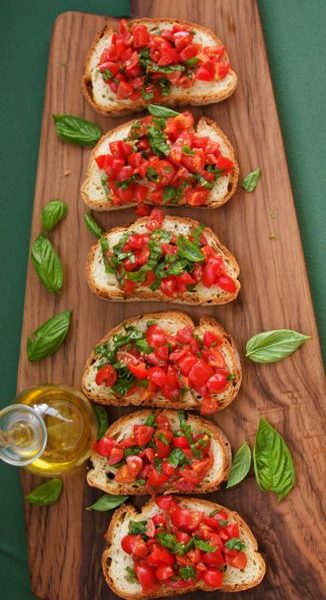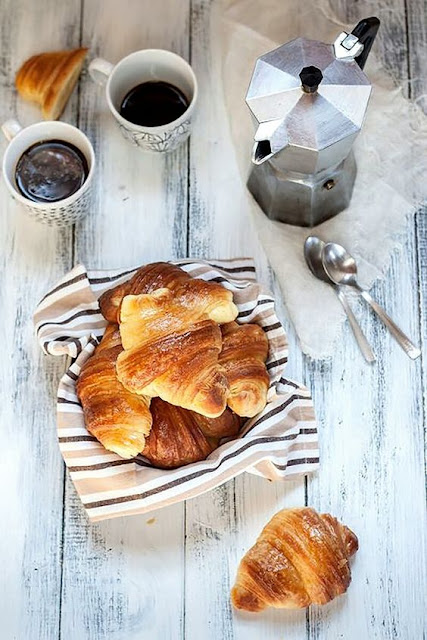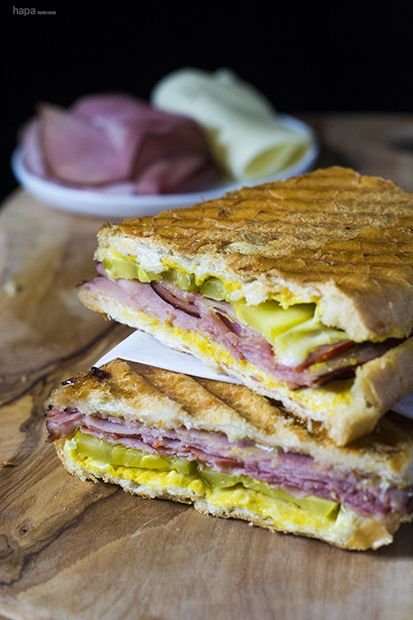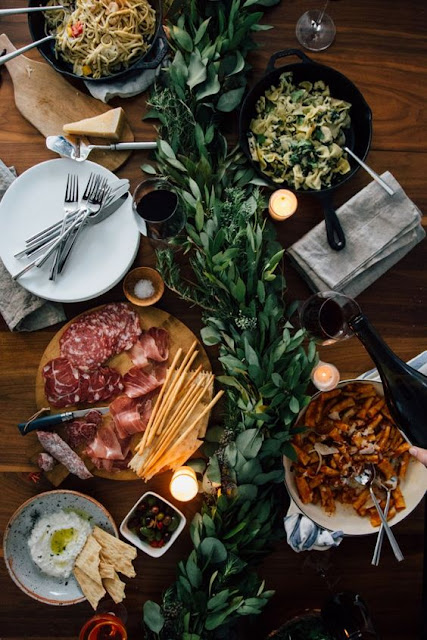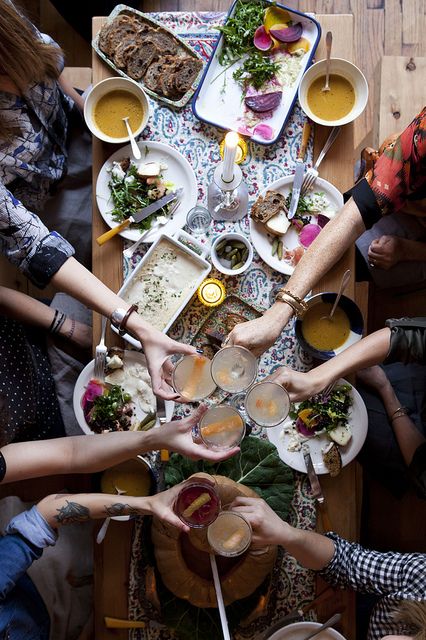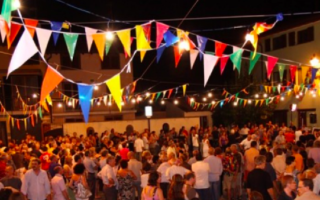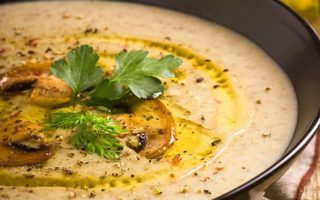Eating Like An Italian:
Food Norms, Beliefs, And Etiquette
Italians live to relish the flavors of their culinary traditions; freshly picked vine tomatoes, handmade pastas, doughy salted breads, perfectly cured meats, mouthwatering mozzarella, and sharp shots of coffee, just to name a few. Typically, Italians enjoy all of their quintessential foods and drinks without guilt or hesitation. They enjoy these flavors with others, often pausing for a few hours to eat lunch or dinner with colleagues, family, and friends.
Despite the relaxed nature of eating and drinking in Italy, the people do have rules when it comes to how, where, when, why, and what they do or do not consume. Of course, Italian eating norms and etiquette hold some contradictions and exceptions, but they do not come about without reason. The way Italians eat and drink aligns with their family-oriented culture, balanced lifestyle, and hearty sense of pleasure, passion, and creativity.
Although visitors do not have to eat like Italians when they travel to Italy, they can try if they wish, using the dining guidelines below. At the very least, travelers can begin to observe Italy’s culinary traditions and consumption norms in practice and compare it to their own. See what translates when tasting, smelling, and observing the flavors of Italy and the mealtime habits of Italians.
The Typical Italian Breakfast
Italians generally eat quite light, sugary breakfasts rather than large, savory morning meals. It is as if they are saving room for their habit of having delightfully long lunches and sit-down dinners. Breakfast or la colazione, is usually eaten at the bar, the Italian equivalent of a cafe or coffee shop, or at home from 7:00 to 10:30am.
At an Italian coffee bar, the typical breakfast is a cappuccino, which is a cupful of warm, foamy milk poured over espresso, and a cornetto, which is a croissant-like pastry filled with miele, honey; crema, cream; marmelatta, jam; or cioccolato, chocolate. At home, Italians often only have coffee, milk, and a few biscotti or cookies for breakfast.
Visitors to Rome should do a Morning Market Walk and Food Tour directly after breakfast to learn about the Roman cuisine and build up a healthy appetite before lunch. Read A Guide to Florence’s Markets if visiting central Italy, instead of the South.
Italian Coffee Rules
Although coffee or caffe, usually in the form of espresso, is drunk throughout the day, there are some timing rules that Italians adhere quite strictly to. Most importantly, during the morning, which is anytime before 11:00am, it is perfectly acceptable to drink cappuccini. However after noon, Italians frown upon drinking large coffee drinks. After 12:00pm, they stick to espressi or cafe macchiati, which is a shot of espresso with a dab of foamed milk. Except at breakfast, coffees are always consumed after meals, not before or during them.
Remember that a cappuccino e cornetto consumed while standing at il banco, or the bar, in a cafe is cheaper that sitting at a table. Standing will cost between €2.00 and €2.50, whereas sitting will be from €4.00 to €5.00.
Discover what bars have the The Best Coffee in Florence, while exploring the Tuscan town of Firenze.
The Typical Italian Lunch
In Italy, lunch or il pranzo, is usually served and eaten from 12:30 to 2:30pm. Although, most Italians will eat their midday meal promptly at 1:00pm everyday. If not in a rush, Italians sit down and enjoy their lunch for at least an hour, either at home or in a restaurant or bar. The majority of Italian adults and schoolchildren go home for lunch, if time allows.
Quick lunches out in Italy include paniniand pizze, but in reality, Italians prefer to sit down and eat a full, cooked meal at lunchtime. Ideally, lunch includes courses; a primo piattoor first course, like pasta, gnocchi, or rice, a protein, and vegetables. Normally, lunch is Italian’s biggest and most sustaining meal of the day.
If visiting Roma in the warmer months, read Rome’s Best Outside Eateries and choose a spot to eat a typical Roman lunch.
The Typical Italian Dinner
Italian dinner or la cena, usually from 8:00 to 10:00pm, is another time that Italians enjoy sitting down together and socializing. Dinner can be much later than 10:00pm, especially if eating out or dining at a friend’s house. After dinner, it is normal to have coffee, as well as digestivi, which are warming alcoholic drinks that are served after a big meal to aide digestion and capitalize on enjoyment.
Typical dinner dishes vary across Italy. If interested in the traditional dishes of the South, read The Best of Southern Italian Cuisine By Region and The Best Markets and Street Food of Palermo.
Italian Aperitivo Culture
Between 6:00 and 8:00pm, just before dinner, it is the Italian aperitivo time. Aperitivo is a drink and a snack or small bite before dinner. If having aperitivo out, the typical price of €10.00 usually includes the food and one drink. This is an idyllic way to catch up with friends or spend time with colleagues after work, before it gets too late in the evening.
Investigate Where to Get the Best Aperitivo in Florence and try a refreshing spritz, an Italian cocktail made with chilled prosecco, aperol, and a fresh orange wedge.
Dining Out in Italy
Dining out in Italy, especially for the first time, is an exciting sensory experience. First of all, Italians always order water with their meal. Water is not free, but it is also not expensive, and it is not normal to order tap water, acqua di rubinetto, although it is possible. Every Italian bar or restaurant will offer acqua frizzante or sparkling water and acqua naturaleor still water for just a few euros. Italians also almost always order vinoor wine, and only sometimes birra or beer, with their food. They never order too much alcohol to drink and usually always order something to eat while they drink. Italians often chose the house red or white wines in restaurants. House wines, as well as higher end wines, in Italy are incredibly flavorful and satisfying.
After a sit down meal, ask the waiter for the check or il conto. Sometimes there is a coperto, a cover charge per person, or pane e coperto, a cover charge plus a fee for bread, so do not be alarmed if there is an extra €1.00 to €3.00 per person on the bill. Tipping is not expected in Italy. With exceptionally good food and service, it is acceptable to leave a ten percent tip, but anything more will seem a little outlandish, although very generous, in Italy.
General Eating Rules in Italy
Italians really do spend time savoring their food and drink, as well as their time around the table. They often cook with fresh, simple ingredients and eat seasonally. In this way, Italians eat very healthily and intuitively. The rarely diet or cut out foods; they will happily order dessert after multiple other courses when out to dinner at restaurants. Most Italian families eat a big family lunch every Sunday. Being invited to eat with the family or at a friend’s house is an expression of love, affection, and warmth. Although not mandatory, Italians will wish each other ‘good eating’ or buon appetito before they begin a lunch or dinner.
Italians do not put different foods together on one plate, instead they eat in courses. So, the salad ofter comes after the first course and the meat, not the other way around. Bread or paneis a dietary staple, but not a whole side dish, in Italy. Freshly cut pieces of bread are always on the table and Italians use a piece bread at the end of the meal to mop up the sauces and flavors left on their plates. This even has a name, fare la scarpetta, which literally translates to ‘make the little shoe,’ but really refers to wiping one’s plate clean with a piece of bread.
Italians will always have wine on the table at dinner or Sunday lunch. They drink red wine, vino rosso, with meat and white wine, vino bianco, with fish. Italians say salute when they cheers, which literally translates to ‘health’.
Foreigners’ Food Faux Pas in Italy
Despite its popularity, Italians do not use both a fork and spoon when eating spaghetti. Actually, when eating pastas that twirl, Italians simply use only a fork. Spaghetti and meatballs do not go together in Italy. They exist, but as separate dishes. Also, Italians never put chicken in pasta or on pizza. Usually, they do not have meat with pasta, although there are some exceptions, like the Roman pasta amatriciana, as well as many fish pasta dishes in the South.
Italians do not put butter or pour olive oil on their bread; as mentioned before they simply use one piece to lap up the remnants of their meal. In Italy, pizza with peperoni is actually pizza with bell peppers, which is not a common pizza topping in the birth country of pizza. Order pizza with salami or spicy salami instead. Finally, latte in Italian means milk, so be careful when wanting to order a large, milky coffee drink, order a caffe latte, not a latte.
Italian Food Beliefs and Superstitions
Italians have some interesting superstitions surrounding eating, so do not be alarmed if asked to look into someone’s eyes or to not sit at a table corner; they are trying to help. Perhaps the most highly prevalent superstition occurs when raising a glass at meals. When people cheers, it is absolutely essential that everyone makes clear eye contact with each person as they clink wine or beer glasses. If people do not look into each others’ eyes, it is bad luck for seven years. If drinking out of plastic cups, people can still cheers, but they must avoid touching each other’s cups.
A whole host of suspicions in Italy exist surrounding the dinner table. Single men and women who sit at the corners of tables are destined to remain single and never marry. Bread should never be placed wrong side up on the table; this is extremely unlucky. However, the most unlucky is when there are thirteen people seated at one table, just like Jesus and the twelve apostles at the fateful Last Supper.
Another superstition says that spilling olive oil or salt, or breaking the olive oil bottle, is very unlucky. However, sprinkling salt in someone’s new house before they move in will help ward off any evil or unlucky spirits.
In many ways, despite having a relaxed culture, Italians are very health conscious. They fervently believe that a person must not swim for at least three hours after eating, otherwise the person could become ill or even worse, die. However, do not worry about this one, unless planning on eating and swimming at the beach all day and wanting to be Italian.
From all of us at Roman Candle Tours, enjoy eating and drinking up the impeccable Italian cuisine and learning about the food norms, etiquette, and customs.
If you liked this article, read also ”
THE BEST OF SOUTHERN ITALIAN CUISINE BY REGION: APULIA, CALABRIA, CAMPANIA, SICILY, AND SARDINIA“
